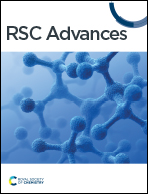Influence of oxygen content on selective laser melting leading to the formation of spheroidization in additive manufacturing technology
Abstract
Selective laser melting (SLM) additive manufacturing technology with different oxygen contents leads to the appearance of spherical solids of different sizes on the surface of the part, which affects the mechanical properties of the part, surface roughness, etc. In this study, the SLM molding technique was applied using three different 316L metal powders with different oxygen contents. The spheroidization properties and morphology of the samples were observed using a Quanta 200 environmental scanning electron microscope (ESEM), and the samples were observed microscopically and subjected to EDX spectroscopy using metallographic microscopy, and the mechanical properties were investigated. The results of the study showed that when using gas atomized powders, no spheroidization occurred when the oxygen content of the powders was 5.44 ± 0.01% in all cases, whereas using water atomized powders produced spherical structures with larger dimensions. This observation was closely related to the shape and particle size of the powder. When 316L metal powder with an oxygen content of 4.52 ± 0.01% was used for molding, small spherical structures appeared on the surface of the samples. When metal powder with an oxygen content of 5.44 ± 0.01% was used for the molding, larger spherical structures appeared on the surface of the samples. When the powder with an oxygen content of 5.90 ± 0.01% was used for the molding, more small spherical structures and some large spherical structures appeared on the surface of the samples. This suggests that higher oxygen levels may inhibit the occurrence of spheroidization. EDX spectroscopic analysis revealed that the white matter on the surface of the samples without spheroidization was mainly composed of Fe and Cr, whereas the white matter on the surface of the large-sized spherical structures was mainly composed of Si and Mn, which may be related to the oxygenophilicity of the various substances.



 Please wait while we load your content...
Please wait while we load your content...